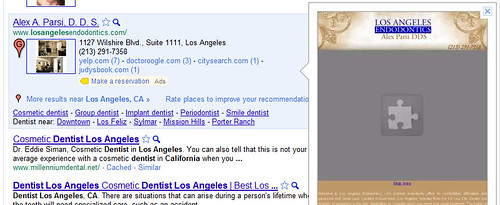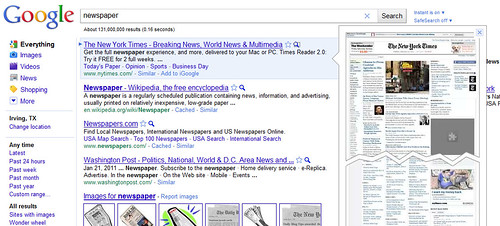Google’s announcement of their new Page Speed Service was so very expected by me that it nearly didn’t form a blip on my radar screen when it flew by in my streams today! 
Category Archives: Google
Vacation Rentals Inflating Reviews In Google Maps
I’ve been noticing an oddity in Google Maps for vacation rentals: some listings have got simply unbelievable numbers of reviews.
Now, I see a wide range of numbers of reviews for all sorts of industries — from zero or just a small handful, to around a hundred, all the way up to a few thousand for highly-popular eateries located in big cities. So, a range of these numbers is normal, and for some cases it’s normal for there to be a few thousand.
For instance, the famous Union Oyster House in Boston is showing a couple of thousand reviews. Considering it’s the oldest restaurant (in continuous service) in the entire country, this even makes sense. It makes even more sense when you see that they have quite a few hundred reviews in Yelp, and OpenTable as well. When someone has placed a reservation for the restaurant in OpenTable, they may be receiving an invite to rate the restaurant after they’ve had their visit there. I’d say this is is a great practice and works well for everyone — the business itself, the person rating, OpenTable, and for consumers shopping for an eatery. The natural outcome is that they’ll have hundreds and thousand of reviews in a relatively short time period.
But, there’s something else going on in vacation rentals which is similar, but isn’t ideal. Continue reading
Google Position Preference is Dead…Long Live Position Preference
On April 4th, 2011, Google announced they are retiring the Position Preference Bidding option in May 2011. If you want to emulate the Position Preference option, you can set up two rules (per campaign, adgroup, or KW, depending on your needs) to control the bidding. The downside is that the bidding adjustments are done at most 1 time per day (but see below) and managing the rules in AdWords is a little clunky.
KeyRelevance’s Recommendations:
- Use CPA Bidding instead, if that is an option.
- Make small adjustments (e.g. 5-10%, $0.05 – $0.10)
- Make sure to set upper and lower limits to bound the changes that can be made Continue reading
12 Tips To Optimize For Google Instant Previews
Earlier today, I outlined how Google’s Instant Preview doesn’t display Maps, Flash, YouTube, AJAX, and lots of other rich media commonly found on webpages. If your site pages or homepage have this stuff on it, chances are your Instant Preview image is less-than-stellar and may actually reduce your CTR.
There are a lot of professional websites which have “borked” Instant Previews. For example, check out this Los Angeles dentist’s homepage, which appears with this jaunty giant jigsaw puzzle piece taking up most of its space:
Google has said that the Instant Previews were found to improve their users’ satisfaction with search results significantly during internal testing prior to rolling out the feature. Users can rapidly glance at the preview images to see if the webpages might hold what they’re looking-for, increasing their confidence and helping them select webpages to click upon which are more likely to hold what they want, avoiding clicking on stuff they don’t want.
If that’s true, then the opposite is likely also to play into users’ behavior: if a preview image looks bad and doesn’t look like what they’d expect or want, they might avoid clicking on it.
For anyone who has a site which doesn’t look right in Google Instant Preview mode, this is alarming, since their introduction of this feature could wrongly reduce your clickthrough rates. Even if you’re not worried about the collective effect over time, you still are likely not thrilled that the image representing you may not reflect a true picture nor show you up in the best light.
I’ve been asked before on how to optimize for Google Instant Previews, so here are a few tips I’ve put together: Continue reading
Google Sneakily Ignored Noarchive With Instant Previews
Google rolled out Instant Previews three months ago in November. After I looked over the new utility, it struck me as very odd that I found pages in Google search results that had no cached view of the indexed content, while they did have this new viewing option of a screengrab of the page.
For instance, quite a number of newspaper websites choose to disable the cached views of their pages. Just search for “newspaper”, and you can immediately see an example such as the New York Times:
As you can see, the listing in the Google search results for The New York Times has no link under it for “Cached”. However, it does have a magnifying glass — the Instant Previews button — which, when clicked, reveals a screengrab of the NYT homepage from Google’s copy of the page when they last spidered it.
The reason the New York Times doesn’t have a “Cached” link is that they purposefully set up Continue reading
Google Local Search Ranking Keys: Relevance, Prominence & Distance
 Google disclosed their three primary types of signals for local search rankings this past month in a blog post on LatLong. In it, they flat out stated that these are: Relevance, Prominence and Distance.
Google disclosed their three primary types of signals for local search rankings this past month in a blog post on LatLong. In it, they flat out stated that these are: Relevance, Prominence and Distance.
For those who’ve been following our articles and conference presentations for the past few years, none of these broad categories of signals come as any sort of a surprise.
Although Google LatLong declares in their post’s title that it’s about “How Local Search Ranking Works”, they’re still understandably obscure for the most part, and avoid providing all that many specifics. There’s a natural tension between informing businesses on how to provide Google with ideal information necessary for ranking, and providing so much info that search engine optimization specialists have “undue advantage” (from Google’s perspective).
So, I thought I’d take this opportunity to list out a number of more specific factors which could feed into Relevance, Prominence and Distance. Read on for a refresher on local search ranking factors which likely could contribute to each of these.
Continue reading
A Few Interpretations of Google’s Response to DecorMyEyes.com
All the recent hubbub over DecorMyEyes.com, and their claim that treating customers poorly in order to obtain more negative reviews resulted in better Google rankings, has left a small cloud of confusion. The ruckus was sufficient to get Google’s interest, and motivated them to react to it, but what they may have done is worth considering, not least because their statement around it has caused part of the confusion, perhaps purposefully.
First, it seems likely that Vitaly Borker, the offensive proprietor of Decor My Eyes, is likely not some stealth marketing genius. Rather, he sounds more like he rationalizes bad behavior in a variety of ways, according to the NYT article about him, and one of his prime beliefs is that negative ratings have helped his Google rankings. His supposed reasons for this were likely wrong by some degree, but he may’ve accidentally derived some benefits from the practice without knowing actual causality.
What makes him more important is that he got Google’s attention, and caused them to react — or claim they’ve reacted — by making some changes to their algorithms. It’s possible that Google responded mainly out of concern over negative press. It’s also possible that they may’ve said they’ve made a change but did not, but it seems equally possible that they could have indeed tweaked their algorithm. The incident really seems to call for us to consider that “where there’s smoke, there may be fire.” Continue reading
Google Launches hProduct Microformat Support In Time For The Holidays

This is a particular boon to the internet retailer sites which are savvy enough to be able to format their data properly for Google to recognize it — a Rich Snippet graphic treatment can be eye-catching, allowing a search result to stand out from the crowd a bit, and this attention-getting display apparently results in a significantly greater click-through rate (if not even a higher conversion rate).
The new shopping Rich Snippet allows e-commerce sites to display information such as price, availability and product reviews in their search engine results page listings. For instance, here’s how a snippet for Buzzillions appears for a Cabela’s jacket:
Google is providing a few different methods to structure e-commerce catalog page data in order for the Rich Snippet treatment to get invoked. One of the prime methods is to code the catalog page in hProduct microformat.
We’ve been recommending the use of Microformats as a component of overall search optimization for quite a number of years at this point — our clients and those who’ve heard us speak at search marketing conferences will hopefully have benefited from the advanced recommendations from us and will already be ahead of the curve. Continue reading
Exploring Dates On Pages As A Ranking Factor
During the past year, I became a little excited at one of Google’s many enhancements to the presentation of search results, because I suspected it could hint at a possible ranking factor they might’ve introduced. The element in question is a date stamp.
You may’ve noticed that in some cases Google will prepend the usual listing snippet text with a date. That change was introduced sometime around late 2008 or early 2009. I noticed the addition of the date with interest, but I became even more interested after I heard Matt Cutts state in a Webmaster Help video that Google considered the date to be helpful to users:
When Google states outright that they consider some element of webpages to be “useful” to searchers, my ears prick up, because Google is so obsessed with Usability that they sometimes use quantifiable elements of user-centered design in their search algorithms, such as their recent introduction of Page Speed as a ranking factor. In this way, Google’s Usability fixation can reveal ranking factors.
I wasn’t alone in twigging to the dates in search snippets — Continue reading
Off-Label Use For Google’s Image Labeler?
One of the creative methods Google has used for associating keywords with images is their Image Labeler game, which has been in “beta” for some years. As you may be aware, it takes images from their extensive repository of spidered pictures, and assigns one simultaneously to two different people who opt to play the game. Each participant submits keywords describing the image presented to them, attempting to also match keywords submitted by the other participant.
If you’ve reviewed very many websites and webpages, you’ll quickly see that there would be a great many cases where Google might spider some images, yet not have very much data to go on in terms of what the image is all about. Ideally, webmasters add images onto webpages with very clear captions right below them, and also use the ALT parameter in the IMG tag to tell what the image depicts. (ALT Text or “Alternative Text” is a parameter that allows a designer to supply some meta-data with an image — the ALT text describes the image in text, enabling audio browsers to speak the image’s text for blind and vision-impaired web users, and the text can also be used by search engines.) Well-optimized sites might even have their image filenames also reflect descriptive keywords, too. However, it’s frequently the case that a webpage designer neglects to do such things, leaving search engines to try to decipher how to make the images appear for appropriate keywords.
So, Google’s Image Labeler game is one of many methods they’re using to overcome the lack of info they encounter in crawling the web. (They also employ some more sophisticated techniques in combination with this, such as supervised multiclass labeling and optical character recognition (“OCR”).)
It recently struck me that Google could easily make use of the Image Labeler in another way as well — a sort of hidden, “off-label use” of the technology. Continue reading





